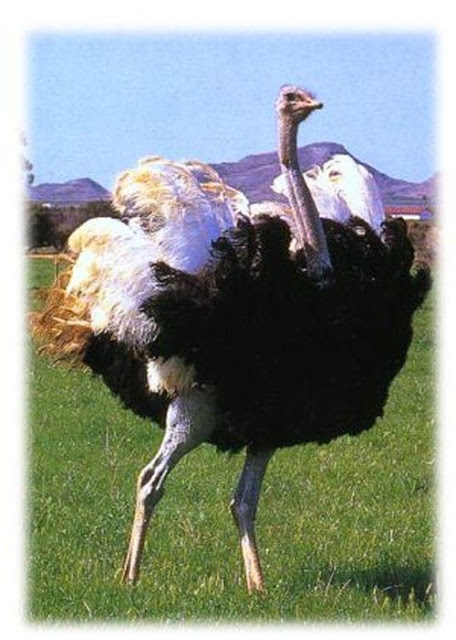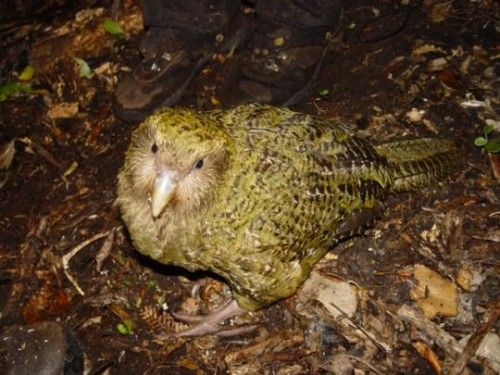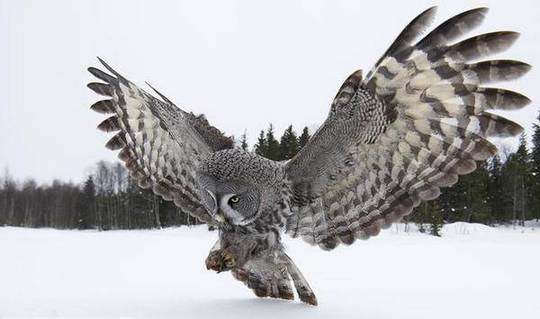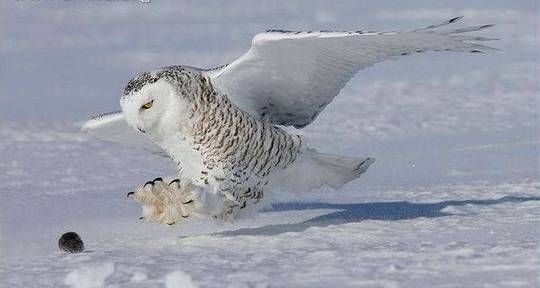There are many species of Birds, but these ones in the List are most Vulnerable to harm because they cannot fly to escape danger.
All of the Birds that Live in this World are Beautiful, but these Birds are even More Unique because of their Inability To Fly.
1. Takahe Bird

This bird is only found in New Zealand and is considered to be an endangered specie of any living flightless birds under rail family. Its been assumed to be extinct before but after a very long search, some takahe birds were found near Lake Te Anau in the Murchison mountain. its overall length is up to 63 cm (24.8 in). It is a stocky bird, with reduced wings, strong legs and a massive bill. At present, there are 225 remaining Takahe birds in its habitat and is being carefully bred to prevent extinction. The only problem is the slow maturity and the low fertility of mature Takahe bird.
2. Penguin

A penguin cannot fly but is a very good swimmer because it can flap its arms rapidly. Its kind lives only in the Southern hemisphere, it is because of the cold temperature there. There about 20 species of penguins but is still debated until now. The largest living species is the Emperor Penguin, while the smallest is the Little Blue Penguin. Penguins usually feed on fishes, squids and other small sea preys they could find while swimming underwater.
3. Kiwi

This bird is endemic to New Zealand and is used as the national symbol of the country. This flightless bird is considered to be the smallest among the ratites. There are about 5 species of this kind of bird. Kiwis are very shy and nocturnal that is why they are vulnerable to predators, but ever since people built sanctuaries for them, they can already be seen in daylight. They have a very sharp sense of smell, and they are a very unusual kind of bird having nostrils at the end of their bills.
4. Cassowary


This bird is only found in New Zealand and is considered to be an endangered specie of any living flightless birds under rail family. Its been assumed to be extinct before but after a very long search, some takahe birds were found near Lake Te Anau in the Murchison mountain. its overall length is up to 63 cm (24.8 in). It is a stocky bird, with reduced wings, strong legs and a massive bill. At present, there are 225 remaining Takahe birds in its habitat and is being carefully bred to prevent extinction. The only problem is the slow maturity and the low fertility of mature Takahe bird.
2. Penguin

A penguin cannot fly but is a very good swimmer because it can flap its arms rapidly. Its kind lives only in the Southern hemisphere, it is because of the cold temperature there. There about 20 species of penguins but is still debated until now. The largest living species is the Emperor Penguin, while the smallest is the Little Blue Penguin. Penguins usually feed on fishes, squids and other small sea preys they could find while swimming underwater.
3. Kiwi

This bird is endemic to New Zealand and is used as the national symbol of the country. This flightless bird is considered to be the smallest among the ratites. There are about 5 species of this kind of bird. Kiwis are very shy and nocturnal that is why they are vulnerable to predators, but ever since people built sanctuaries for them, they can already be seen in daylight. They have a very sharp sense of smell, and they are a very unusual kind of bird having nostrils at the end of their bills.
4. Cassowary

This is knwon to be the second largest flightless birds next to ostrich. They are fed mainly on fruits and other plants that edible. Its species is also part of the ratite and has only three accepted today: Southern Cassowary, Dwarf Cassowary, Northern Cassowary. They are a very kind of bird but once disturbed would be a very dangerous bird as listed by the Guinness. Although Cassowary birds are already becoming extinct.
5. Ostrich
This is known as the lasrgest flightless bird and it is the only specie that lives of its family. I know that most of us already know this fact but its egg is even larger than its brain that is why this kind of bird is known to do crazy things. An ostrich can run as fast as 46 miles per hour and is considered to be the faster bird runner on land. There is nothing to be worried about with this species because they are not even close to being endangered.
6. Rhea Birds
This specie belongs to the flightless ratite birds and is native to South America. Among any other flightless birds, it has large wings that are spread when this bird is running. It has two species; the American Rhea and the Darwin’s Rhea. This bird reach up to 6 months until it become mature but does not go into breeding until it reach the age of 2 years old.
7. Kakapo
If we are going to examine the fosils of the Kakapo in the entire country of New Zealand, it would seem that it is the most common bird before. The species of this bird are already becoming extinct that is why many conservation plans have been made to prevent this bird to get extinct. According to statistics, the number Kakapo birds significanly increased. They are nocturnal, that’s why the meaning of their name is “night owl”. This bird is also named as parrot owl because of its features.
8. Emu
This bird is the largest native bird of Australia is the only extant member of genus Dromaius. This bird reaches up to 2 m (6.5 ft) in height, and is common to mainland Australia. Almost the same as the ostrich, it can run up to the maximum speed of 30 miled per hour. It is not yet becoming extinct nor is it near of becoming endagnered. It is because of its environment that makes it sake frm any harm. There are about three extant specie in Australia.
9. Galapagos Cormorant
The name itself would suggest that it is a native in the Galapagos Island. Among any other cormorants, this is the only specie that has lost the ability to fly, it could be because this bird has adopted life on the land and water. This bird has an estimated 1500 embers left on the wild that is why many groups try to have active conservation program to save the lives of the remaining flightless cormorant. It normally feeds on fishes, eels, small octopus, and other small sea creatures. This bird is considered to be the largest among its extant species. Reproduction of its bird starts on the coldest months like July to October when there is an abundant food.
10. Dodo
The dodo is an extinct, flightless bird that lived on an island in the Indian Ocean near Mauritius. The species lost the ability to fly presumably because food on Mauritius was abundant and mammalian predators were absent. It is genetically related to pigeons and doves, and its closest relative is the likewise extinct Rodrigues Solitaire. The Dodo was about one metre (3.3 feet) tall and weighed about 20 kilograms (44 lb). Its appearance is evidenced only by paintings and written accounts from the 17th century. Because these vary considerably, and only a few sketches are known to have been drawn from life, its exact appearance remains a mystery.

























